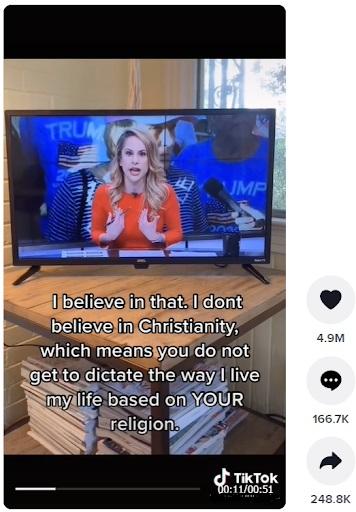
The Pro-Choice Movement in the 21st Century
This paper will discuss the pro-choice movement in the United States, which fights for freedom of reproductive rights for everyone. The focus will be on the message of the movement and the possible consequences if Roe v Wade gets overthrown.
Pro-Choice movement on the move
The Texas Heartbeat Act that went into effect in September 2021 has shocked people over the entire world. The ban prohibits abortions after six weeks of pregnancy with the only exception being medical emergencies. Cases of sexual assault and incest that are not medically threatening do not fall under these exceptions. Even though the attacks on Roe v Wade have been rising in the United States and many new restrictions have been adopted, the Heartbeat bill is the most hostile act towards reproductive rights so far. This has caused an uproar across the United States, with even President Joe Biden calling it "a blatant violation of the right established under Roe v Wade". So early September, the Biden Administration sues the state of Texas after a careful assessment of the law. In their case, they call it an act that is "unconstitutional under long-standing supreme court precedent.".
They are not the only ones who are fighting against the Heartbeat Act that also deputizes all private citizens to serve as bounty hunters in exchange for $10,000, turning in anyone who might have helped with an abortion (Senate Bill, 2021). As a result of the introduction of multiple American anti-abortion bills, the female reproductive movement has become highly active, both in the online and offline world. They spread the word on social media using the name Pro-Choice using hashtags like #mybodymychoice. We will dive into this movement by analysing the different sides of the movement, what they do and why they are fighting so hard. Finally, we will look into what will happen if Roe V Wade gets overturned and analyse a couple of organisations that help stop these consequences from becoming a reality.
What is the Pro-Choice message?
The Pro-Choice movement has been gaining more attention over these last few months. They are really active on social media, using platforms like Instagram, Twitter, and TikTok. They fight for the freedom of reproductive rights, the freedom of making choices about their own body. Their chief objective is to make sure that everyone with a uterus has the right to bodily autonomy (Staggenborg, 2001). This means that if someone gets pregnant, they have the right to choose whether they want to keep the fetus or not. The decision should be up to them and not the government or anyone else, hence the slogan My Body, My Choice. The mantra originates from the 1970s and was unofficially coined as the mantra of the gender equality movement and seen as the words of empowerment and retaliation (Patterson, 2020). According to Silverstein (2011), the message of a politician is not just about the issues it wants to tackle, as one might expect. The message of a politician, or in this case of a movement, is also dialogical, meaning that not only the movement’s input produces its message but also the responses of other actors in the public sphere. The movement makes all sorts of input, input productions of messages that are then forwarded into the public sphere. There it is picked up by other actors, sometimes in a positive way and sometimes in a negative way.
What better place to get responses from other actors in the public sphere than on social media? And so, the movement uses nearly every online social platform there is to voice their opinions, posting all sorts of content, producing and spreading the Pro-Choice movement multimodally. They comment and repost content they agree with, or repost things they do not agree with, trying to disprove it. More often than not, this ends up with them going head to head with their counterparty Pro-Life.
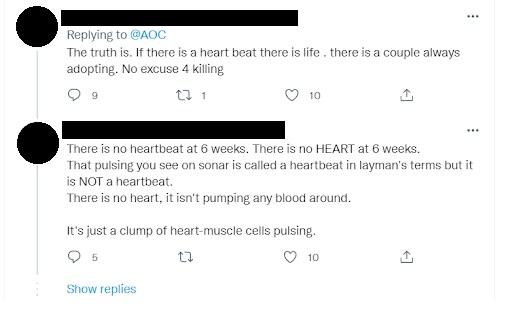
Figure 1: A discussion in a comment section between Pro-Choice and Pro-Life
This is seen in Figure 1, where a Pro-Lifer claims that abortion is murder because “if there is a heartbeat there is life”. Someone commented on that saying that there is no heart yet to have a heartbeat and that it is a clump of heart-muscle cells. This is an example of how Pro-Choice tries to educate the other party, trying to let them see that there is no heart yet. For more information on the counter movement, Pro-Life, click here.
The comments seen in Figure 1 are actually found in a comment section on Twitter as reactions to a Tweet showing a clip of Alexandria Ocasio-Cortez. The US representative appeared on CNN to talk about what is happening in Texas and was asked to respond to Governor Abbott.
She talked about the new Texas Bill, calling it an 'anti-choice bill' that makes it impossible for most people to have a legal abortion. The renaming of the Texas abortion bill is a negative reaction to the message that Abbott put into the public sphere. The message is not just about the issues a politician or movement fights for but also about the debate around it, the comments, the reposts, and the likes. All the interactions, positive and negative are part of the message and actually help to bring the message across (Lempert & Silverstein, 2012). AOC reframes the opposite party, producing a negative message of them. Not only that, but Pro-Choice also reframes the bill claiming that the bill is not about saving the lives of babies but about taking away the choice of women. Hence renaming it the “anti-choice” bill. By reframing someone’s position, the way society interprets it can also change, leading to more power (Maly, 2016). AOC called Governor Abbott out for saying that six weeks is more than enough to get an abortion. Saying that six weeks is two weeks late for your period, and people can easily miss a period due to stress, diet change, or no real reason at all. A clip of this was posted on Twitter, where heated discussions were held in the comments.
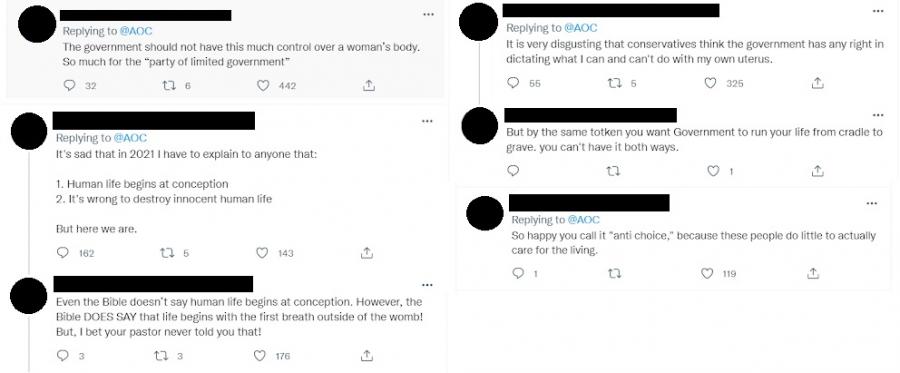
Figure 2: Comments on the Tweet of AOC
Figure 2 are a few of the many comments that were found in the comment section on Twitter as a response to what Ocasio-Cortez said on CNN. What is striking about the tweet’s thread is the immediately noticeable continuation of the pro-choice vs pro-life debate, seen in these tweets here. As we see in these two examples, the pro-choice side supports Ocasio-Cortez, saying she has phrased her message well or agreeing with her on how the government should not be making decisions about people’s bodies. This means that Ocasio-Cortez is on message for the pro-choice movement in this clip. However, the pro-life side says that human life begins at conception and that abortion is ‘killing’ because the fetus has a heartbeat. This is where the debate starts- the pro-choice side comments on what the pro-life side says, arguing that there is no heartbeat at six weeks and that life begins within the first breath outside of the womb. These comments further produce the pro-choice message that Ocasio-Cortez conveys. We can also see here how likes can turn into political statements, showing whether someone supports a movement or not. We can now draw the conclusion that the pro-choice movement believes that abortion should be legal in the first trimester of pregnancy, especially in cases of rape, that this bill is simply about controlling women and their bodies, and that the government should not be able to pass bills like these.
AOC is an example of someone using their visibility to reach a broader audience. Some well-known people supporting the movement use their visibility, whether that is on social media, the traditional news like newspapers or radio, or TV. Another example of someone who does this as well is Ana Kasparian, shown in Figure 3. Ana Kasparian, a progressive American commentator, has been using her visibility to get her point across. The TikTok shows a snippet of a story that was covered by Kasparian back in 2018, that has resurfaced since the Texas abortion bill. In the story, she makes clear how she feels about Pro-Life using religion and the bible as a way to control the bodies of other people. She states that "I don't believe in Christianity which means you do not get to dictate the way I live my life based on your religion."
She clearly says that she does not care if someone is Christian and that she will fight for them to have their religious liberties and that they can practice their religion. Her message is clear, she does not care about the bible and is not religious, therefore it also should not get to tell her how to live her life. Someone recorded this video from their TV with their smartphone, posting it online where people started sharing it on all platforms. This is a clear example of dual screening, the bundle of practices that involves integrating and switching across and between 'live broadcast' media and social media accessed through smart devices that have access to the internet (Chadwick et al., 2015). Dual screening is part of the hybrid media system, which consists of interactions between older and newer media (Chadwick, 2013). People use information flows in a way that is beneficial to reach their goals. For more information on how Pro-Choice uses the hybrid media system, click here. Even though it is sometimes unclear if this movement explicitly makes use of this practice because it is more common to repost a clip of an interview and comment on it than to use videos or photos of e.g. television programs to show that you are watching something.
People like Kasparian and AOC are incredibly important to the pro-choice movement, as they use their influence to generate more visibility and attention for it. These people are members of the movement just like anyone else who supports the Pro-Choice movement, only the difference is that they actually have the influence and the network to act as spokespeople. This is important considering the movement itself does not have a direct leader, and essentially can be seen as leaderless. However, it should be noted that the movement is built on different parts, such as organizations, and those parts in themselves can actually have their own leaders. For example, the women’s march that is held every year since 2017, is a big part of the movement and does have a clear leader.
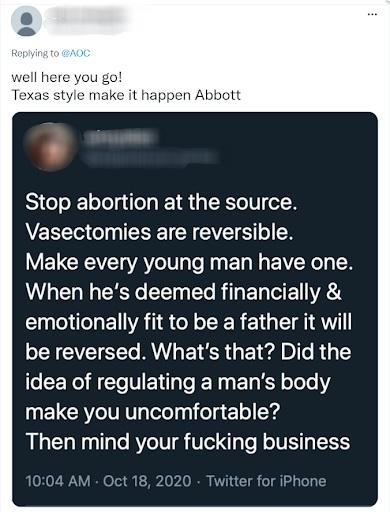
Figure 4: A comment talking about mandatory reversible vasectomies
Another comment (Figure 4) mentioned stopping abortion at the source, referring to reversible vasectomies, a form of male birth control. This has been a recurring topic in the Pro-Choice discussions. Actor, director, and filmmaker, Justin Baldoni made a TikTok about it saying that if this new mandate is not about controlling women, then all unmarried men should get a mandatory reversible vasectomy. He claims that he has one and is 100% effective. More posts like these have been on social media, but not all actually mean for men to get a mandatory vasectomy. Posts like that are used to get a reaction from the other side, which they often get. The idea of making male birth control mandatory for unmarried men gets a lot of comments, mostly from males, saying that they do not want to be forced into something like that. This is precisely the point Pro-Choice tries to make. If they do not want to be forced into mandatory reversible vasectomies, that will cause abortion rates to drop as fewer women can get pregnant, they also should not be allowed to control someone's body, forcing them to carry their pregnancy to term even if they wish not to.
If they [men] do not want to be forced into mandatory reversible vasectomies, they also should not be allowed to control someone's body, forcing them to carry their pregnancy to term even if they wish not to
Both Figure 4 and the TikTok of Baldoni, are responses to the message of the Pro-Life movement. As mentioned before, the movement, in this case, the Pro-life movement, creates input with their message and is put into the public sphere where other actors can now respond to it. With this instance, we see that actors from the Pro-Choice movement are using the message of Pro-life, and using it for their own. They turn around the argument by now putting men in the spotlight instead of women. Instead of women’s bodies that are regulated, it is now men's bodies that would be regulated with the mandatory reversible vasectomies.
Supporting organisations
Just like well-known people supporting the movement is important, so is the support by organisations. The pro-choice movement is not alone and is supported by many organisations. These organisations are a big part of the movement, which do have clear leaders and can be seen as important pillars of the movement. They help convey the message into the public sphere trying to reach all sorts of target groups.
One of them is Planned Parenthood, a nonprofit health care organisation. According to the Planned Parenthood website, its mission is to "ensure all people have access to the care and resources they need to make informed decisions about their bodies, their lives, and their futures". (Planned Parenthood, n.d.) They deliver sexual and reproductive health care and sex education to millions of people across America. They are also a big pro-choice supporter. However, to make things more precise, they use pro-reproductive rights and anti-abortion instead of pro-choice and pro-life (Pisacreta, 2019). Planned Parenthood also helped with the 2021 Women's March that took place on October 2nd.
By raising their voices, pro-choice actually takes away the voice of pro-life, taking advantage of the internet and its ways to quickly spread certain types of discourse.
Another group supporting the pro-choice movement is Gen-Z for Change. It is a coalition, with mostly Gen-Z (people born between 1995 and 2005) that fights for equal rights for everyone, regardless of who they are or what they identify with. They want to build a better world, a better future. With their big platform, they try to raise awareness about climate action, Black Lives Matter, LGBTQ+ rights, women's rights, bodily autonomy, and many other injustices (Gen-Z for Change, n.d.). One of the people working for Gen Z for Change is Olivia Julianna. She has a powerful online platform with many followers on Instagram, Twitter and TikTok. On TikTok, she posts short videos reacting to people explaining things about the abortion ban and its consequences. So when back in August, a website called prolifewhistleblower.com was launched, she undertook action.
The Texas Right to Life website deputised private citizens to tell on people having an abortion in exchange for a $10,000 bounty. This was not just dangerous for the person getting an abortion but also for anyone providing help. Anyone could be reported, whether it would be the doctor or the uber driver who brought the person to the clinic. Julianna made a TikTok, using faulty hashtags to confuse the algorithm so her post would not be taken down, sarcastically saying that "it would be really really bad and morally wrong if people would go to prolifewhistleblower.com sending anonymous tips that are fake. Especially if the tips are about Governor Greg Abbot". She was one of the very first to urge her followers to crash the website. But she was not the only one as other TikTokers followed suit by making videos on how they encourage others to do the same or make shortcuts on how to do it more effectively.
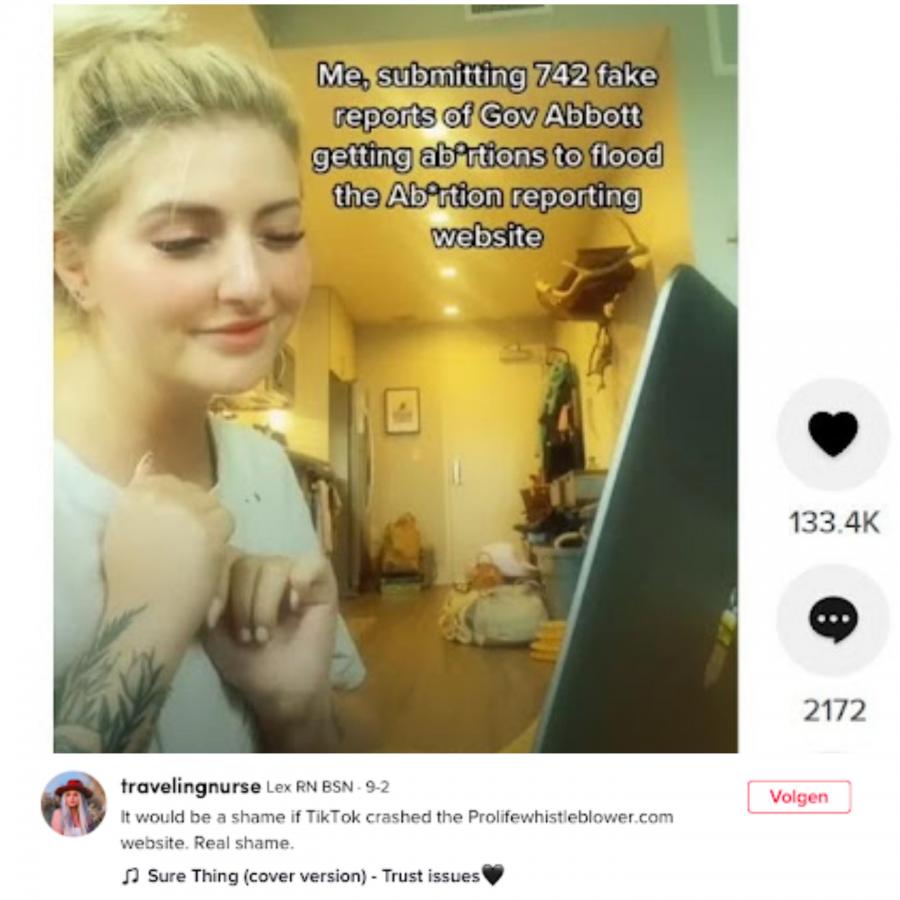
Figure 5: A TikTok showing someone who submitted fake reports in the hope to crash the whistleblower website
One of these Tiktokers said that she submitted nearly 750 fake rapports of Abbott getting an abortion (see Figure 5). Her caption said "it would be a real shame if TikTok crashed the prolifewhistleblower.com website. A real shame". Another TikToker/activist, going by Saun DaBlack, programmed a Python script and an iOS shortcut that people could download, allowing them to submit thousands of tips a day. His data showed that combined nearly 17,000 people used his shortcuts (Paul, 2021). Also, on Reddit people rallied together to help crash the website. They sent in Shrek memes, the entire script of the Bee movie, and even porn (Paul, 2021). All these forms of discourse ended up with the website crashing and being taken down. It was again put back online a couple of times before officially going offline. People are now redirected to the Texas Rights to Life website, which came up with the whistleblower site. For the pro-choice movement, this was a huge accomplishment. The pro-life movement now ca not send in tips anymore, taking away part of their discourse. So by raising their voices, pro-choice actually takes away the voice of pro-life, taking advantage of the internet and its ways to quickly spread certain types of discourse.
What happens if Roe v Wade is overthrown?
The Pro-Choice movement has not been fighting without reason. The rising attacks on Roe vs Wade can lead to daunting futures where Roe v Wade actually gets overthrown. It is not just Texas where the constitutional rights for abortion are threatened. Their North-East bordering state Arkansas is rumoured to be the next state to pass a bill that looks similar to the Texas ban. Senator Jason Rapert introduced the Arkansas Heartbeat Protection Bill, which will "prohibit and criminalise abortion unless the mother's life is in danger". (NALC-National Legislative Council Executive Committee, 2021). Arkansas already has many anti-abortion laws restricting access to care for pregnant people. The state passed a trigger law in 2019, which will cause an immediate abortion ban if Roe v Wade gets overturned (Vagianos, 2021). In Mississippi, there is already a ban in place prohibiting abortions after 15 weeks. The last abortion clinic in the state, the Jackson Women's Health Organisation, showed evidence that fetal viability is impossible at that time (Hassan, 2021). But that is not all, as the state has asked the Supreme Court to overrule Roe v Wade which can have severe consequences.
If Roe v Wade is overturned, people in many states will not have access to safe abortion, and those without resources will have to travel for hundreds of miles to the nearest state that still provides legal abortions. There are already 21 states with laws or constitutional amendments ready to place bans (Nash & Cross, 2021). Five states will have a near-total abortion ban, multiple states will have a six-week ban not yet in effect, and four states will have constitutions that will bar the right to an abortion, prohibiting any protection for abortion rights. There are another five states that, based on several indicators are likely to ban abortion (Nash & Cross, 2021). This leads to 26 states that will either have strict rules or actual abortion bans if Roe v Wade gets overturned (see Figure 6).
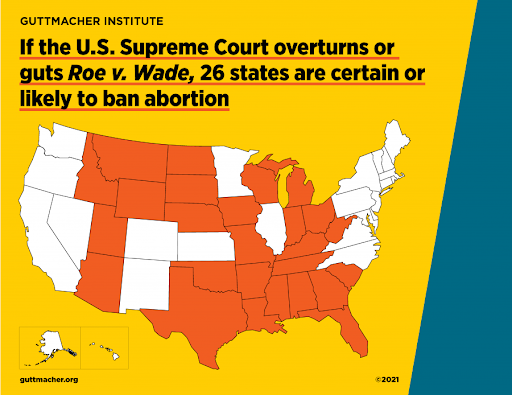
Figure 6: All the states that are likely to ban abortion if Roe v Wade gets overturned
By putting these bans in place, only safe abortions will be banned. People seeking abortions will start looking for backstreet options, which are much less safe. More people will die because of these backstreet abortions causing maternal mortality rates to rise. Poverty rates will increase too, as not all people have enough money to take care of a child. If abortion can be banned, there will be no guarantees for any exceptions, including cases like rape, incest, or endangerment of life. This can result in instances like in the Dominican Republic where a 16-year-old leukemia patient died because she was denied chemotherapy because she was pregnant. But because of the abortion ban, she was also not allowed to have an abortion to start chemo causing both her and her fetus to die (Romo, 2012). People can be told by their doctors that they will not survive the pregnancy and will die before delivering the baby and not be able to do anything about it because of the ban. Rape victims, sometimes as young as ten years, will be forced to carry their fetus to term.
Next to that, miscarriages will be investigated and people are being incarcerated for miscarriages. Medically seen, there is no way to tell the difference between a miscarriage and an abortion. So if a doctor does not believe that someone had a miscarriage, they can call the police. People are sent to jail for several years because of unavoidable miscarriages. Dana Sussman, deputy executive director of the National Advocates for Pregnant Women, says that if Roe is overturned, prosecutors can "weigh the life of a fetus above that of a mother [...]" that can lead to people being sentenced to jail sometimes on account of manslaughter" (Collman, 2021).
All these consequences only show why people, including AOC, would be renaming the Texas Heartbeat bill, the 'anti-choice' bill. People end up having no choice or no resources to get to a safe place where their choices are respected and heard. The message that Pro-Life is trying to tell with the abortion bill, the comments, and the discussions, often end up doing the exact opposite of what they wanted. They are trying to get people to join their movement, but all these restrictions and laws and possible penalties only show that it indeed is, or at least is leaning towards, an anti-choice bill. The Pro-Choice movement does not see its counterparty as a movement that is trying to save lives, but as a movement that is trying to take away people's free choice.
Conclusion
On balance, the Pro-Choice movement is fighting hard in several different ways to keep the right of bodily autonomy. They use social media platforms like TikTok, Instagram, and Twitter to spread awareness of recent developments, spread information, and start discussions with their counter-movement Pro-Life trying to disprove them. They are joined by well-known people who use their visibility to reach a broader audience and are supported by many organisations. To them, the right to abortion is a human right, and no one except the person themselves should be allowed to make decisions about that. Banning abortion will have massive consequences across the country, with states already having trigger bans in place. People will start looking for backstreet abortions, with danger for their own lives. Miscarriages will be investigated and people might be incarcerated for an inevitable miscarriage. All of this can be prevented as long as Roe v Wade won't get overthrown, which is why this movement is fighting so hard to keep abortion legal. The abortion ban is a classist law. Because abortions will still be available to the rich and important.
References
Gen-Z for Change. (n.d.). About –.
Chadwick, A., Dennis, J., & Smith, A. P. (2015). Politics in the Age of Hybrid Media. The Routledge Companion to Social Media and Politics Routledge.
Collman, A. (2021, October 20). An Oklahoma woman’s jail sentence for manslaughter after a miscarriage highlights an ‘extreme acceleration’ in prosecuting pregnancy over the last 16 years. Insider.
Durkee, A. (2021, September 9). Biden Administration Sues Texas Over Abortion Ban. Forbes.
Hassan, A. (2021, December 1). The Mississippi Abortion Law That Challenges Roe v. Wade. The New York Times.
If Roe v. Wade Falls: Travel Distance for People Seeking Abortion. (n.d.). Guttmacher Institute.
Kornfield, M. (2021, September 7). A website for ‘whistleblowers’ to expose Texas abortion providers was taken down — again. Washington Post.
Lempert, M., & Silverstein, M. (2012). Creatures of Politics: Media, Message, and the American Presidency (Illustrated ed.). Indiana University Press.
Maly, I. (2016). ‘Scientific’ nationalism: N-VA and the discursive battle for the flemish nation. Nations and Nationalism, 22(2), 266–286
NALC-National Legislative Council Executive Committee. (2021, July). NACL Model State Heartbeat Act.
Nash, E., & Cross, L. (2021, November 22). 26 States Are Certain or Likely to Ban Abortion Without Roe: Hereâs. Guttmacher Institute.
0, July 27). The Evolution of “My Body, My Choice”. Voices of Gen-Z.
Paul, K. (2021, September 4). TikTokers flood Texas abortion whistleblower site with Shrek memes, fake reports and porn. The Guardian.
Pisacreta, E. (2019, November 4). Can you explain what pro-choice means and pro-life means? Planned Parenthood.
Planned Parenthood. (n.d.). Planned Parenthood | Official Site.
Romo, R. (2012, August 18). Pregnant teen dies after abortion ban delays her chemo treatment for leukemia. CNN.
Staggenborg, S. (2001). Reproductive Rights in Affluent Nations. International Encyclopedia of the Social & Behavioral Sciences, 13184–13188.
Texas Senate Bill, 8 U.S.C. §171.207 (2021) https://legiscan.com/TX/text/SB8/id/2395961
Vagianos, A. (2021, October 20). Arkansas Is Poised To Be The Next State To Pass A Texas-Style Abortion Ban. HuffPost.
